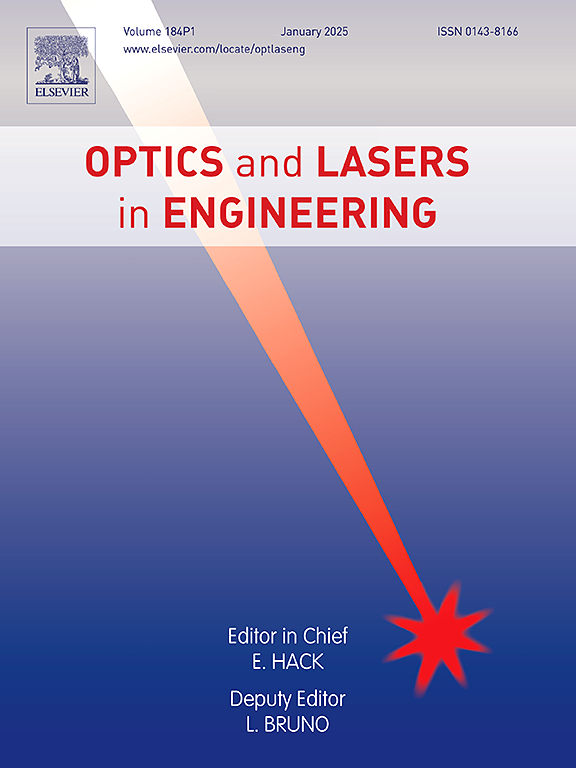High-resolution, real-time 3D measurement using gradient features and spatial-temporal speckle projection system
IF 3.5
2区 工程技术
Q2 OPTICS
引用次数: 0
Abstract
Speckle projection profilometry (SPP) finds widespread application in industrial manufacturing and academic research owing to its benefits of non-contact, high speed and ease of integration. In this paper, we present a novel high-resolution, real-time 3D measurement technique realized through gradient-feature-based stereo matching and spatial-temporal speckle projection. In terms of algorithm, unlike traditional stereo matching methods that depend on grayscale information, we propose a new spatial-temporal stereo matching strategy based on horizontal and vertical gradient features as well as digital image correlation technique, enabling sub-pixel disparity estimation with high precision. On the hardware side, we developed an optical projection system capable of projecting temporally varying speckle patterns to encode the scene under test. Experiments are conducted to verify the feasibility and effectiveness of the proposed method. Our method achieves a root mean square error (RMSE) of 0.0621mm with two-frame speckle patterns (compared to 0.0835mm realized with the commonly used three-frequency four-step phase shifting method). In dynamic object experiments, our method achieves real-time 3D reconstruction at 27 frames per second. These experiments have validated the application prospects of the proposed method in achieving high-precision measurement with few frames.
利用梯度特征和时空斑点投影系统进行高分辨率实时三维测量
本文章由计算机程序翻译,如有差异,请以英文原文为准。
求助全文
约1分钟内获得全文
求助全文
来源期刊

Optics and Lasers in Engineering
工程技术-光学
CiteScore
8.90
自引率
8.70%
发文量
384
审稿时长
42 days
期刊介绍:
Optics and Lasers in Engineering aims at providing an international forum for the interchange of information on the development of optical techniques and laser technology in engineering. Emphasis is placed on contributions targeted at the practical use of methods and devices, the development and enhancement of solutions and new theoretical concepts for experimental methods.
Optics and Lasers in Engineering reflects the main areas in which optical methods are being used and developed for an engineering environment. Manuscripts should offer clear evidence of novelty and significance. Papers focusing on parameter optimization or computational issues are not suitable. Similarly, papers focussed on an application rather than the optical method fall outside the journal''s scope. The scope of the journal is defined to include the following:
-Optical Metrology-
Optical Methods for 3D visualization and virtual engineering-
Optical Techniques for Microsystems-
Imaging, Microscopy and Adaptive Optics-
Computational Imaging-
Laser methods in manufacturing-
Integrated optical and photonic sensors-
Optics and Photonics in Life Science-
Hyperspectral and spectroscopic methods-
Infrared and Terahertz techniques
 求助内容:
求助内容: 应助结果提醒方式:
应助结果提醒方式:


